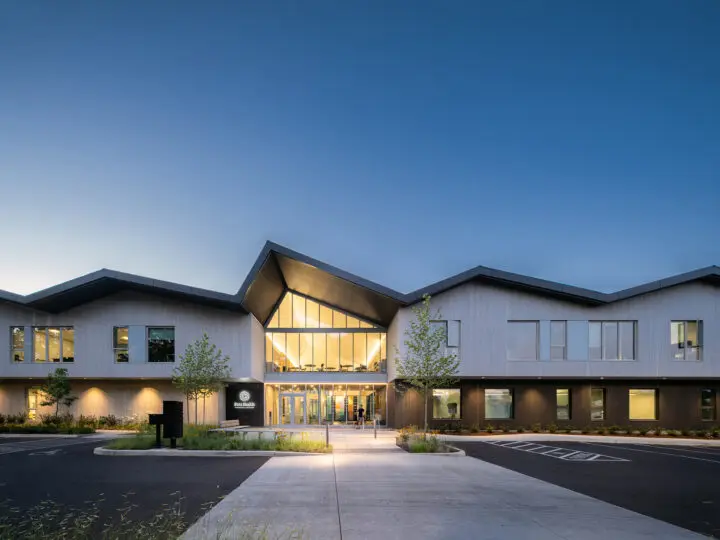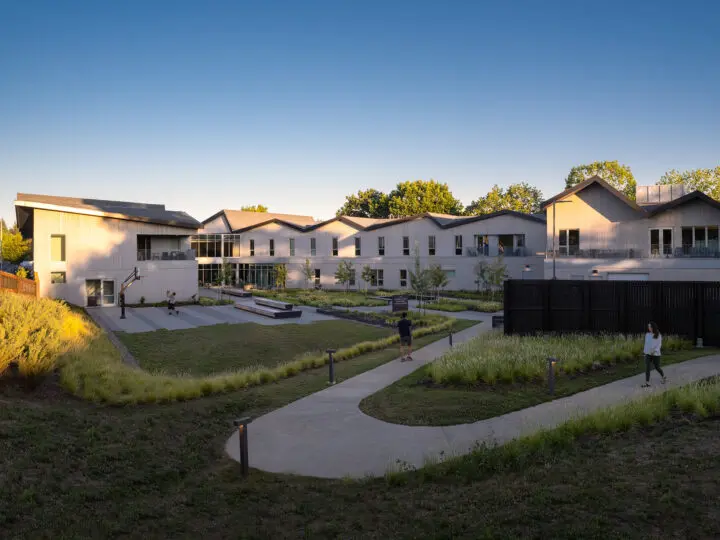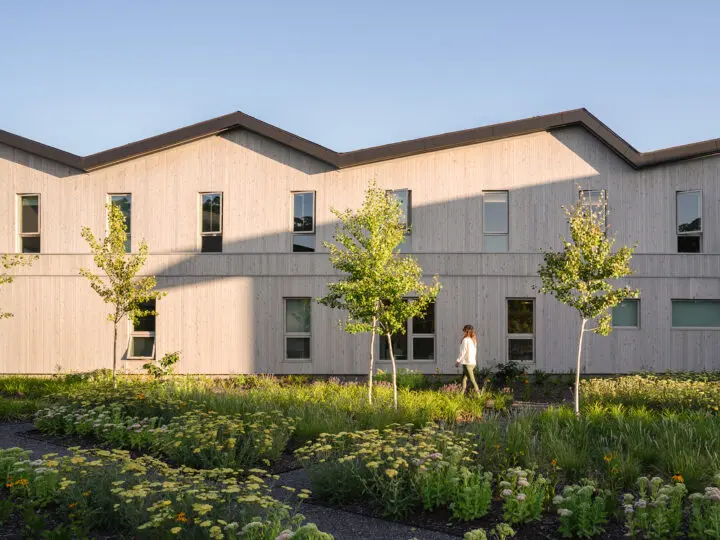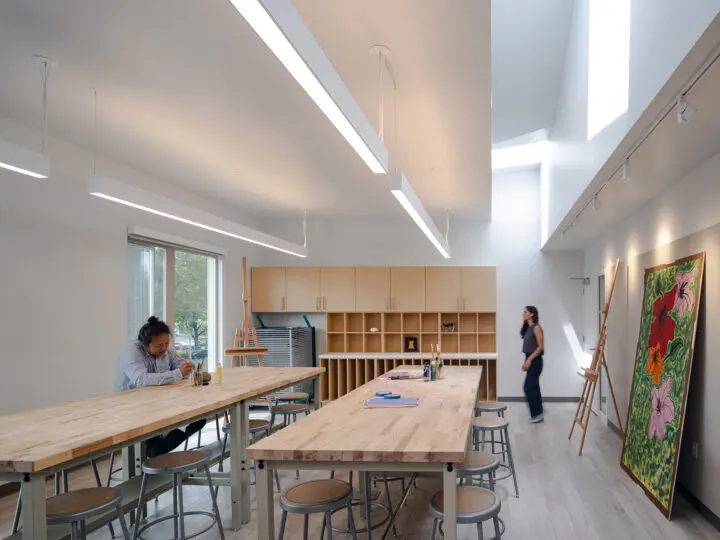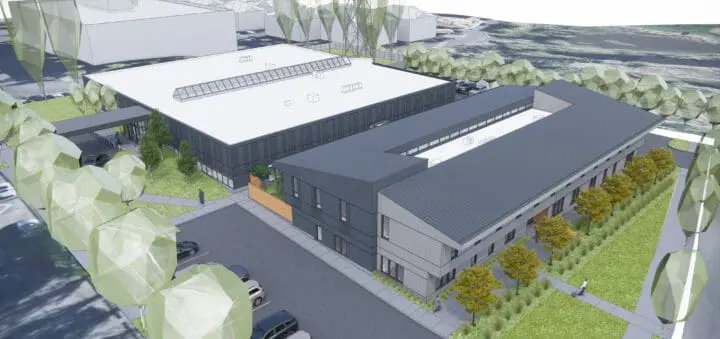
CATT | Beaverton Recovery Center
One of two buildings that make up the Washington County Center for Addictions Triage and Treatment, the Beaverton Recovery Center will provide spaces for residential treatment, sobering, withdrawal management, and transitional services.
Project Details
Location
Beaverton, OR
Client
Washington County
Year Completed
Anticipated Fall 2025
Project Size
40,600 sq. ft.
Land Recognition
We have a responsibility to not only acknowledge but also elevate Native communities and their needs. This project is located in what is now known as Beaverton, originally called Chakeipi or “Place of the Beaver” by the Atfalati branch of the Kalapuya Tribe. Also known as the Tualatin Kalapuyas, these people once lived across much of modern Washington County and some of northern Yamhill County. They collected foods in seasonal rounds and were rich enough in supplies to share their wealth via potlatch giveaways. Severe epidemics brought by settlers tragically and dramatically reduced population numbers in the 1700-1800s. Many members of the community were forcibly removed to the Grand Ronde Reservation.
Educating ourselves is an important action. We encourage you to explore the stories of these communities through Native-led resources like Oregon State University Professor David G. Lewis, PhD’s The Quartux Journal, and by visiting the Chachalu Tribal Museum and Cultural Center.
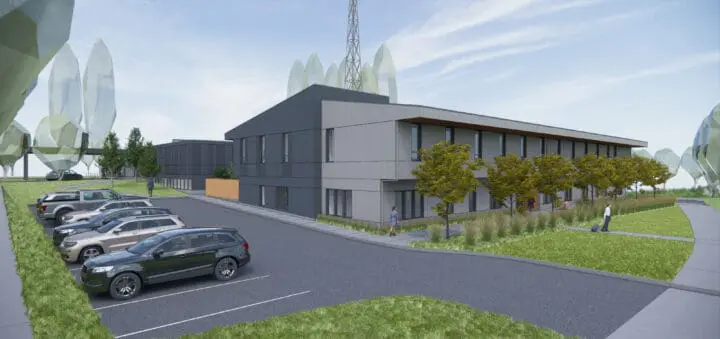
Increasing Access to Addiction Treatment
The Washington County Center for Addictions Triage and Treatment (CATT) consists of two buildings, the Beaverton Recovery Center and the Hillsboro Recovery Center, which together will provide comprehensive addiction treatment support. Oregon ranks 48th in the nation for access to substance use treatment programs, and there are currently only 32 residential treatment beds in Washington County. CATT will be an important step in closing this huge gap in treatment services. The Beaverton Recovery Center will focus on providing intensive addiction recovery services.


Holistic Addiction Treatment
The Beaverton Recovery Center will house residential treatment, including clinical spaces and 56 residential beds, where a person will typically live for 30-90 days in a supportive environment that will help foster skills to avoid relapse. The withdrawal management program will provide 16 beds for short-term services, typically 3-5 days, with 24/7 nurse monitoring and addiction support. The sobering program will provide a safe and monitored space for individuals who are acutely intoxicated. Finally, the transitional services will provide six beds for individuals transitioning from residential treatment or between programs. To accommodate all the service spaces, the renovation to the 9-1-1 dispatch center includes 16,600 square feet of new construction.

Courtyards for Relaxation & Recreation
Access to nature is provided through two enclosed courtyards, one for active use and one for quiet contemplation. The active use courtyard will have a basketball hoop and an open area for residents to exercise. The quiet courtyard will have walking paths and seating for small group therapy.

Trauma-Informed Design Choices
Design features include skylights, a natural color palette that avoids stark whites and high contrast elements, and wood accents to create a welcoming reception and intake experience. The existing wood ceiling is exposed in key areas throughout the building renovation.
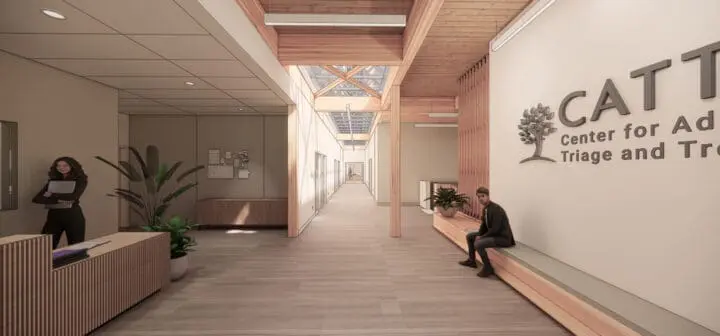
Intentional Space Planning
The design team took care during programming and planning to ensure that equitable space would be given to the gender-separated wings of both residential and detox, while taking every opportunity to incorporate nature through internal courtyards, skylights, and windows in hallways. Emphasis was put on plan organization that promotes clear wayfinding with lobby/reception areas at the entrances and clearly defined corridors and sightlines throughout the building.




